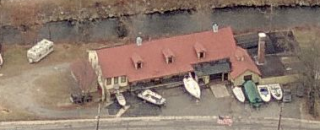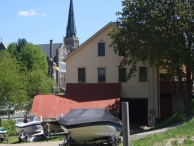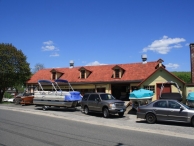Mill Record Winchester
RETURN TO ‘FIND MILLS’Disclaimer: Content for these properties was compiled in 2014-2017 from a variety of sources and is subject to change. Updates are occasionally made under Property Information, however the Connecticut Trust for Historic Preservation (dba Preservation Connecticut) makes no representation or warranty that the information is complete or up-to-date.
- Complex Name (Common)
- Morgan Silver Plate Co.
- Complex Name (Historic)
-
- Morgan Silver Plate Co.
- Address or Location
- 119 Willow Street, Winsted, Winchester
- County
- Litchfield
- Historic Designation
- Associated Mill Community
- n/a

- Historic Information
Companies Associated w/Complex
- Kenley Co. 1934-unknown
- Morgan Silver Plate Co. 1887 - 1934
Use (Historic)
Largest Documented Workforce
40
Historic Narrative
NOTE: DETERMINED POTENTIALLY ELIGIBLE FOR NR LISTING AS PART OF SMALL INDUSTRIAL DISTRICT (w/ 10 Bridge St, 9 Willow St, 35 Willow St) IN 2023 BY SHPO. The Morgan Silver Plate Company was organized in October in 1887 by James T. Morgan, who served as the firm’s general manager. The company built its own factory on the south side of the Mad River in 1887-88, which it occupied until closing c.1931. It specialized in casket hardware, which complimented the nearby Strong Manufacturing Company, a producer of undertaker’s implements and casket linings. In 1900, the two companies were slated for merger, but health problems within the Strong Manufacturing Company leadership caused the arrangement to fall through. Also in 1900, it acquired T. S. Carroll’s champagne tap business. In 1930, Morgan offered over 30 casket handle designs, in more than forty finishes, including gold, nickel, and silver plating. All of the hardware pieces continued to be wrought by hand, and only the plating process was executed on a large scale. The operation did not survive the onset on the Great Depression: at first Morgan outsourced its work to a Philadelphia firm, but shut down entirely c.1931. From closing until 1934 the building was home to a dog brush manufacturer called Kenley, but little is known about its occupants after that. Today the building is used as a marine repair facility. Note: 3/2023 SHPO determined complex to be eligible for listing as part of a small historic industrial district (10 Bridge St incl'g rear; 9 Willow, 35 Willow and possible 119 Willow).
- Architectural Information
Number of Existing Buildings
Four (4) blocks.
Dates of Construction
1888, c.1919, c.1925
Architect
n/a
Builder
n/a
Building Type
Architectural Description
The complex is comprised of roughly four blocks, the oldest of which is the main 1888 three story, post and beam structure, approx. 160’ by 60’, which housed office, buffing, packing, shipping and storage. Built on a bank, the Willow Street façade has only one-story exposed, with a series of roof dormers; the Mad River façade has lower level loading doors. A small boiler house on the southwest corner of the original building still exists. Operations were primarily powered by water, by a channel which ran underneath the entirety of the building from west to east; the canal raceway which fed into the factory has since been filled and is unrecognizable. Later additions to the east side of the building (c. 1919 and c.1925) housed plating, and casting operations. The rail line ran along the other side of Willow Street.
Exterior Material(s)
Structural System(s)
Roof Form
Roof Material
Power Source
Condition
Good, Fair, Deteriorated
Condition Notes
All portions of the building are in generally good condition.
- Property Information
-
Specific Location
One 1.59 acre parcel on the north side of Willow Street, south of the Mad River and east of the Case Avenue Bridge
Adjacent To
Exterior Visible from Public Road?
Yes
Parcel ID / Assessor Record Link
- 111/ 070/ 032 / Link →
Acreage
1.59
Use (Present)
- Commercial
- Other: 3/2023 SHPO determined complex to be eligible for listing as part of a small historic industrial district (10 Bridge St incl'g rear; 9 Willow, 35 Willow and possible 119 Willow).
- Vacant
- Sources
-
Form Completed By
Michael Forino
Date
n/a
Bibliography
- 1947 Industrial Directory of Connecticut.
- The Hartford Courant, 1892-1948.
- Sanborn Fire Insurance Maps, 1887-1947.
- Representative View(s)Click on image to view full file








